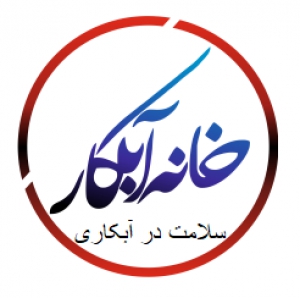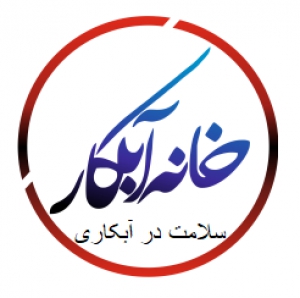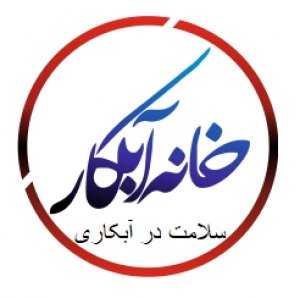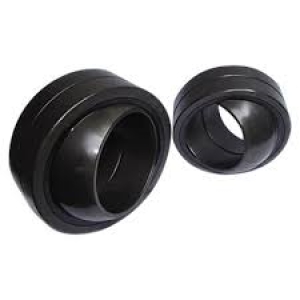استاندارد خروجی پساب آبکاری و نکاتی مهم در مورد آن
مقدمه و تعاریف
این استاندارد ماده آئین نامه جلوگیری از آلودگی آب و با توجه به ماده سه همین آئین نامه و با همکاری وزارتخانه های بهداشت، درمان و آموزش پزشکی، نیرو، صنایع سنگین، معادن و فلزات، کشور و کشاورزی توسط سازمان حفاظت محیط زیست تهیه و تدوین گردیده است. در این استاندارد تعاریف و اصطلاحاتی که بکار رفته است بشرح ذیل می باشند:
آب سطحی: عبارتست از آبهای جاری فصلی یا دائمی، دریاچه های طبیعی یا مصنوعی و تلالابها
چاه جاذب: عبارتست از حفره یا گودالی که قابلیت جذب داشته و کف آن تا بالاترین سطح ایستابی حداقل 3 متر فاصله داشته باشد.
ترانشه جذبی: عبارتست از مجموعه ای از کانالهای افقی که فاضلاب بمنظور جذب در زمین به آنه تخلیه شده و فاصله کف آنها از بالاترین سطح ایستابی حداقل.
کنار گذر: کانالی است که فاضلاب را بدون عبور از بخشی از تصفیه خانه یا کل آن به بخش دیگر و یا کانال خروجی هدایت کند.
نمونه مرکب: عبارتست از تهیه یک نمونه 24 ساعته از نمونه هایی ...............
برای خواندن ادامه مطلب به سایت نویسنده مقاله مراجعه فرمایید.
مرجع : جلاپردازان پرشیا
تصفیه پساب ها آبکاری ENGLISH
environmental controls
WASTEWATER TREATMENT
BY THOMAS J. WEBER
WASTEWATER MANAGEMENT INC., CLEVELAND;
WMI-INC.COM/HOMEPAGE.JHTML
Today, some 15,000 companies in the United States perform electroplating andmetal finishing operations. These firms discharge their spent process wastewaterseither directly to rivers and streams, or indirectly to Publicly OwnedTreatment Works (POTWs). Metal finishing, by far, comprises more individualwastewater discharges than any other industrial category. Typically, pollutantscontained in metal finishing process waters are potentially hazardous, therefore,to comply with Clean Water Act requirements, the wastewaters must be treated,or contamination otherwise removed, before being discharged to waterways orPOTWs. Regulations, in general, require oxidation of cyanides, reduction ofhexavalent chromium, removal of heavy metals, and pH control.Understandably, for companies discharging wastewater directly to waterways(direct discharges), regulations promulgated through the years requireattainment of the more stringent concentration-based limitations for toxicwastewater constituents necessary for protection of aquatic life. These streamstandards were developed from Federal Water Quality Criteria and limit instreampollutant concentrations to levels that will not adversely affect drinkingwater quality and aquatic life. Since the mid 70s, state agencies have continuedto drive direct discharge limitations downward to levels well below waterquality-based stream standards, using antidegration, antibacksliding, andexisting effluent quality (EEQ) policies, and the number of direct dischargershas dropped precipitously. Implementation of biological-based criteria throughbiomonitoring and bioassay testing will continue to force direct dischargingfacility closures and relocation to POTWs.As the overwhelming majority of metal finishing companies are dischargingto POTWs, wastewater treatment systems for these firms are installed for compliancewith federal pretreatment standards, or...........
برای خواندن ادامه مطلب به سایت نویسنده مقاله مراجعه فرمایی.
مرجع : شرکت جلاپردازان پرشیا
کنترل آلودگی آب - ENGLISH
environmental controls
WATER POLLUTION CONTROL
FOR PAINT BOOTHS
BY ALAN MONKEN
As a nonrenewable resource, water and its conservation are of prime importancein the metal finishing industry. The reduction and control of water pollution inthe manufacturing process is an important area for improvement; one of the mostcritical areas of industrial water usage is the paint shop. Current technology canbe utilized to reduce water consumption and improve the efficiency of water use.To put this technology in perspective, it is necessary to explore the use of water inthe paint shop, the available chemical means to deal with water pollutants, andthe mechanical means of removing these pollutants.
THE PAINT SHOP
The function of the paint shop is to apply an organic coating (i.e., paint) to a substrate(i.e., metal or plastic) for protective and decorative reasons. The paint canbe applied in various forms, including dry powder, solvent-diluted formulations,and waterborne formulations. The application method can vary widely, two ofthe most common being through spraying or through immersion. In the case ofimmersion or dip-paint systems, very little paint waste is generated. The drawbackto immersion painting, however, is that variations in paint colors and types areseverely limited within the same operation. Spray systems allow a great deal offlexibility in the types and colors of coatings that can be applied.The downside of spray systems is that not all of the paint sprayed comes intocontact with the work surface. The paint that misses the production part is commonlyknown as overspray. If the process being used is powder painting, the oversprayedpaint can most typically be collected and reused (the ability for capturingthis excess powder typically is designed into the powder paint spraying system orbooth). If the process involves liquid paint, however, the paint overspray quicklychanges from an asset to a liability as it becomes paint waste. Although it is possibleto collect this oversprayed paint on dry-filter media....
برای خواندن ادامه مطلب به سایت نویسنده مقاله مراجعه فرمایید.
مرجع:شرکت جلاپردازان پرشیا
اسید های آبکاری، کاربرد ها، خطرات- اسید کلریدریک
مقدمه
اسید کلریدریک یک اسید معدنی قوی خورنده با کاربرد صنعتی زیاد است. یک محلول بدون رنگ و بسیار سوزاننده از کلرید هیدروژن (HCl) در آب است، هنگامی که با یک پایه ارگانیک واکنش می دهد، یک نمک هیدروکلراید را تشکیل می دهد.اسید هیدروکلریک توسط کیمیاگر جابر بن حیان در حدود سال 800 میلادی کشف شد. نام های قدیمی اسید هیدروکلریک ، acidum salis ، مورتیک اسید و جوهر نمک نامیده می شود، زیرا از سنگ نمک و زاج سبز (سولفات آهن (II)) (توسط Basilius Valentinus در قرن 15 میلادی) و بعدها توسط نمک شیمیایی معمولی و اسید سولفوریک (توسط یوهان رودلف گلاوبر در قرن هفدهم) تولید شد.هیدروکلریک اسید آزاد به طور رسمی در قرن شانزدهم توسط لیبیویوس شناسانده شد.بعدها، توسط شیمیستهایی مانند گلابر، پریستلی و دیوی در تحقیقات علمی مورد استفاده قرار گرفت. اسید کلریدریک غیر از حالت تحت فشار و سرد شدن، اگر کمتر از حدود 60% آب در آن وجود داشته باشد تبدیل به گاز خواهد شد. اسید کلریدریک همچنین...............................
برای خواندن ادامه مطلب به سایت نویسنده مقاله مراجعه فرمایی.
مرجع: شرکت جلاپردازان پرشیا
سیاه کاری فلزات آهنی
سیاه کاری(Black Oxide Processes)
اکسید سیاه بر روی آلیاژهای آهنی را می توان با استفاده از حمام نمک مذاب در دمای حدود 315⁰C یا بالاتر، محلول سیاه کاری سرد در دمای محیط و یا محلول قلیایی پایه آب جوشان در دما 135-148⁰C بدست آورد.
کنترل حمام های مذاب در دماهای بالا بسیار مشکل است و از اینرو پوشش حاصل رنگی یکنواخت نخواهد داشت. محلول های سرد نیز اغلب بجای رنگ سیاه، رنگ خاکستری ایجاد می کنند و پوشش حاصل از این نوع حمام ها دوام زیادی نخواهد داشت. از اینرو، از فرایندهای سیاه کاری سرد نمی توان پوشش اکسیدی با رنگ سیاه خالص و یکدست بدست آورد. این پوشش ها اغلب حاوی ترکیبی از مس و سلنیم بوده و بسیاری از مشخصه های فنی و استانداردهای بخش های خودرو سازی و نظامی را تامین می کنند. محلول های قلیایی جوشان بر پایه آب متداول ترین روش سیاه کاری می باشند. پوشش حاصل از این روش رنگ سیاه قوی تر و یکنواخت تری را ایجاد می کند.
پوشش اکسید سیاه اغلب برای فولادهای کربنی، فولادهای آلیاژی، فولادهای ابزار و قالب سازی و چدن ها بکار می رود. فولادهای زنگ نزن و آلیاژهای مسی را نیز می توان سیاه کاری نمود.
پوشش سیاه کاری فولاد از مگنتیت(اکسید آهن سه ظرفیتی) تشکیل می شود که نتیجه اکسیداسیون آهن و اکسیژن هوا یا یون های اکسید کننده موجود در ..................
برای خواندن ادامه مطلب به سایت نویسنده مقاله مراجعه فرمایید:
مرجع:شرکت جلاپردازان پرشیا
تئوری فسفاته کردن فلزات قبل از شکل دهی
5 . 4 فسفاته کردن به منظور تسهیل فرم دادن سردفلزات
1 . 5 . 4 نگاه کلی
استفاده از روش فسفات دارکردن برای تسهیل فرم دادن سردفلزات به کشفی توسط سینجر در سال 1937 باز می گردد . در این پتنت آلمانی به شماره ثبت اختراع 673405 ، سینجر استفاده از لایه های کریستالیزه شده چگال چسبیده ه به هم اکسیدها یا نمک هایی را برای روکش کردن آهن یا فولاد قبل از انجام عملیات فرم دادن پیشنهاد داد . هدف ، تشکل یک ساختار کریستالی چسبیده به پایه فلزی ، از طریق یک واکنش شیمیایی بود ، همان طور که در روش فسفات دار کردن نیز این هدف دنبال می شود . سینجر متوجه شد که چنین لایه های تشکیل شده از مواد معدنی ، با این مقدار سختی و مقاومت در مقابل فشار های بالا ، فاصله مناسبی بین ابزارمورد استفاده و فلز در حال فرم گرفتن ایجاد می کند . از آن جایی که خاصیت چسبندگی آن ها حتی در صورت کشیده شدن نیز به خوبی حفظ می شود ، می توانند برای تسهیل تغییر شکل های شدید و مکرر استفاده شوند .
فواید استفاده ار روکش فسفات در مقابل مواد استفاده شده در گذشته ، مثل روکش های سرب ، عمدتا اقتصادی هستند و همچنین این که می توان آن ها را به راحتی بعد از عملیات فرم دادن ، از طریق یک حمام اسید معدنی از فلز جدا کرد . استفاده از روکش های هیدروکسید آهن که گاهی در گذشته انجام می گرفتند ، از طریق زنگ زدن قطعه چس از جدا کردن آن انجام می شد . این نوع روکش ها به علت چسبندگی کم و حالت پودری و گسسته شان فقط فلزات نجیب را قادر به تغییر شکل می کردند .
در آلمان ، در زمان جنگ جهانی دوم ، فسفات دار کردن برای شکل دادن آهن و فولاد سرد به کار برده می شد . همراه با شرایط موجود در آن زمان ، این روش برای صنایع تولید مهمات به کار برده می شد ، برای مثال در سال 1944 اهمیت فسفات دار کردن به عنوان یک چسبنده برای شکل دادن فلزات سرد بسیار بیشتر از کاربرد آن به عنوان یک سد در مقابل خوردگی تلقی می شد . در دهه 1960 اهمیت این دو کاربرد فسفات دار کردن تقریبا یکسان شد . با این حال ، در سال های اخیر ، در نتیجه افزایش شدید تولیدات صنایعی چون خودروسازی ، نقش اساسی فسفات دار کردن برای مقاومت در برابر خوردگی به عنوان یک پیش رنگ می باشد ، که باعث کاهش اهمیت آن در فرم دادن فلزات سرد شده است .
در ایالت متحده آمریکا و انگلستان فواید فسفات دار کردن برای فرم دادن فلزات سرد ، بعد از اتمام جنگ روشن شد . با این حال به سرعت پیشرفت کرد و امروزه در اکثر کشورهای صنعتی و پیشرفته به عنوان سهل کننده شکل دادن به فلزات سرد استفاده می شود . اساسی ترین کاربرد آن شامل تولید سیم ها و لوله های فولاد سردمی شود . پرس کردن مداوم فولاد سرد فقط از طریق فسفات دار کردن امکان پذیر است . در این فرایند و تمام دیگر زمینه های شکل دادن سرد و کشیدن سرد ، سطوح فسفات دار شده بیشترین سرعت تغییر شکل را نتیجه می دهند و ...................
برای خواندن ادامه مطلب به سایت نویسنده مقاله مراجعه فرمایید.
مرجع:شرکت جلاپردازان پرشیا
تئوری فسفاته اسپری زیر رنگ
شرکت مهندسی جلاپردازان پرشیا
فرایند فسفاته روی اسپری:
مقدمه
یکی از اولین ابکاریهای انجام شده در صنایع آبکاری فسفات روی است. این ابکاری به صورت پاششی و غوطه وری استفاده میشود.
بهبود چسبندگي رنگ، افزايش مقاومت به خوردگي، از اهداف استفاده از فسفاته اسپری است. مواد تشكيل دهنده حمام فسفاته كاري روي، شامل اكسيد روي، اسيد فسفوريك، نيتريت ها يا نيترات ها (به عنوان تسريع كننده) و آب مقطر مي باشد.
پوشش فسفاته بعنوان يك پوشش تبديلي، از واكنش قطعات آهني با محلول فسفاته حاصل مي شود . اين واكنش فقط در سطح قطعات اتفاق مي افتد.اين فرايند بهمراه عمليات چربيگيري و بعضاً اسيد شوئي تحت عنوان آماده سازي قطعات شناخته شده است.
پوشش هاي فسفاته اسپری به دو منظور كلي زير كاربرد دارد:
1-افزايش چسبندگي رنگ : كريستالهاي فسفاته با ايجاد زبري روي سطح قطعات و ایجاد خلل و خرج در سطح در ابعاد میکرونی باعث گیر افتادن زنجیرهای پلیمری پایه رنگ در این خلل و خرج شده و در نتیجه باعث افزايش چسبندگي رنگ به سطح مي شود.
2-افزايش مقاومت به خوردگي : كريستالهاي فسفاته با ايجاد زبري روي سطح قطعات محمل بسيار مناسبي براي نگهداري هر چه بيشتر و طولانيتر روغنهاي ضد خوردگي مي باشد. همچنين از جوش خوردن قطعات آهني به يكديگربعلت زنگ زدگي مانند پيچ و...................................
برای خواندن ادامه مطلب به سایت نویسنده مقاله مراجعه فرمایید
مرجع:شرکت جلاپردازان پرشیا
واحد پاشش-ENGLISH
finishing equipment & plant engineering
SPRAY BOOTHS
GLOBAL FINISHING SOLUTIONS, DALLAS, TEXAS
Before learning the features, benefits, and uses for spray booths, it is important to know the basics that apply to all spray booths: the reasons for using a spraybooth, what a spray booth can and cannot do, the various federal, state, andlocal agencies that give approval to a new spray booth installation, NationalFire Protection Association Bulletin 33 (NFPA-33) as it relates to spray boothdesign and booth classifications, the difference between code compliance andenvironmental compliance, how to determine booth efficiency, and the mostcommon types of spray booths and how they are used.The various codes and agencies that govern spray booth classification, installationand operation can be very confusing. Understanding the codes and howthey apply to spray booths allows for identifying the most appropriate booth.The purpose of a spray booth is to confine the application of a hazardous material to a restricted controlled environment. Spray booths prevent hazardous overspray and volatiles from escaping confinement and causing fire or explosionhazard to nearby operations. They control the air-fuel mixture so that a combustible combination cannot occur. In addition, spray booths provide a clean environment in which to paint.
REGULATION OF SPRAY BOOTHS
The primary function of a paint spray booth is to reduce the likelihood of firesand explosions. A secondary consideration is protecting the operator from toxic materials. This protection is best done with respirators, protective clothing, and hoods. Spray booths cannot be designed to adequately protect the operator from overspray contamination. It is not unusual for part geometry to require the spray gun to be directed near the operator.A spray booth is not an emission control device even though some end ............................................................
برای خواندن ادامه مطلب به لینک زیر مراجعه فرمایید:
مرجع جلاپردازان پرشیا
سئوالات مرسوم در رکتیفایرها و کنترل - EGLISH
troubleshooting, testing and analysis
FREQUENTLY ASKED QUESTIONS
ABOUT RECTIFIERS & CONTROLS
BY PETER VAN GORP, AMERICAN PLATING POWER, FT. MYERS, FLA.
Q: I have few questions about Pulse Reverse current rectifiers: 1- Should we expect to getthe same ripple problems with PRC rectifier that we get from SCR DC ones? 2- Do the programmedcurrents for pulse and reverse rectifiers need to be readjusted from time to time?
A: 1. The answer to this question depends on what you mean by Ripple. ThePeriodic Reverse Pulse Rectifier (RPP) rectifies the input voltage to createa so called DC-Link. This DC-Link voltage has a very low Ripple, and isthen used to produce the output wave form. The result is both a ForwardCurrent and Reverse Current with a very small Ripple. However, the overalloutput wave form goes both positiveand negative, and thus can be considereda high Ripple waveform to your process.
2. The pre-programmed Current levels for both positive and negative pulseswill not need any adjustment since the regulation circuits will continuouslydetect and correct any variations.
Q: We are using cathodic electrodeposition, and we have an applied voltage of 350 Volt DC.We have a continuous problem as an arc at the contact point of the plating material (we useBolymar Ecoat Material). Is this problem related only to the contact points? Or are theresome other factors causing this problem?
A: The only other cause I can think of is if you are using an SCR rectifier withoutoutput filtering; you’ll measure 350 VDC RMS, but in reality the peak voltagesof the rectified voltage are higher (350 x √2 = 495V !!!). You can verify this bylooking at the .......................................
برای خواندن ادامه مطلب به لینک زیر مراجعه فرمایید:
مرجع جلاپردازان پرشیا
ENGLISH-طراحی هیتر برای گرم کردن محلول در آبکاری
IMMERSION HEATER DESIGN
BY TOM RICHARDS
PROCESS TECHNOLOGY, MENTOR, OHIO; www.process-technology.com
The immersion heater represents a sound, economical method of heating processsolutions in the finishing industry.Classical heater installations consisted of hanging a steam coil on one tankwall, sized to heat up water to a “rule-of-thumb” temperature in two hours.While this method has proved adequate in providing heat and covering a multitudeof oversights, it has also proved unsatisfactory with regard to energy
costs and control. As the cost of energy rose, the finisher increased heat-uptimes in an attempt to conserve energy. Soon, heat losses prevented achievingdesired temperature levels so tank insulation, covers, and other methods of lossconservation were added. Again, adequate solutions to most of the challengeswere found, but the hanging steam coil remained unchanged. Today, we havethe knowledge that allows us to adequately plan, design, install, and operateeconomical, efficient heating systems.Molecular activity, chemical solubility, and surface activity are enhancedthrough temperature elevation. The reduced solution surface tension, low vaporpressure of some organic addition agents, and heat-sensitive decomposition orcrystallization of other additives are major considerations that modify the benefits
gained as solution temperature rises. To achieve a proper balance of all thesefactors, while providing economical installation and operation, it is necessary toanalyze the individual heating requirements of each process. Your best sourceof process information is your process chemical supplier, ...............................
برای خواندن ادامه مطلب به لینک زیر مراجعه فرمایید:
مرجع جلاپردازان پرشیا










